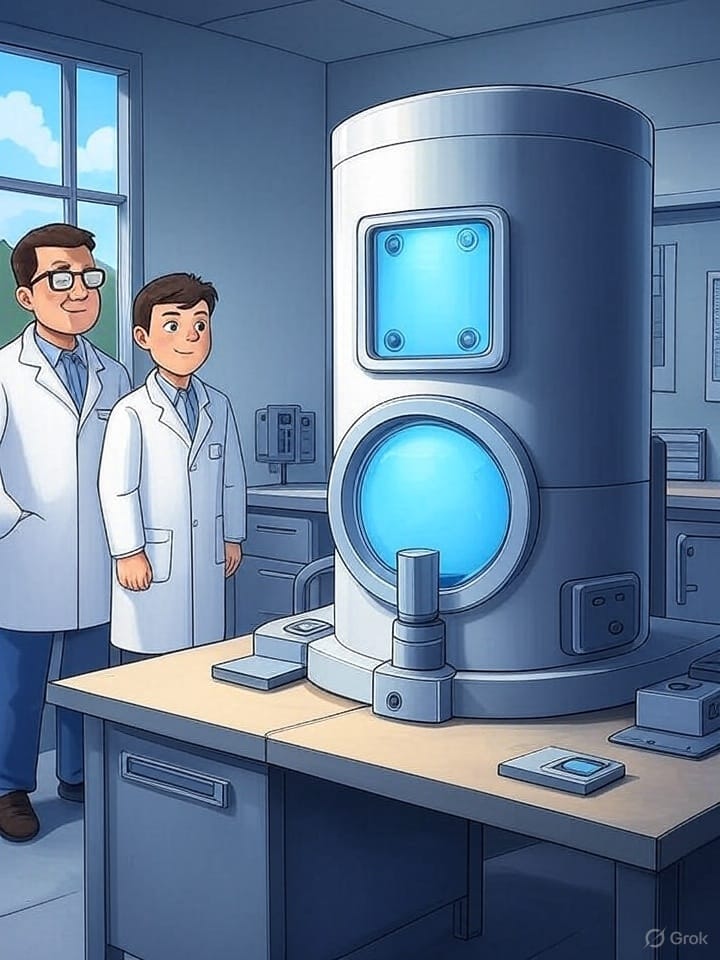- Shortlysts
- Posts
- Nuclear’s New Chapter: Small Modular Reactors Move Forward as Energy Demands Soar
Nuclear’s New Chapter: Small Modular Reactors Move Forward as Energy Demands Soar
Small modular reactors are transitioning from theory to reality, with technological advancements and rising demand reshaping America’s nuclear energy future.

What Happened
As America's electricity demand surges, fueled by AI and cloud computing, small modular reactors (SMRs) are emerging as a key solution. Tech giants, including Amazon, Google, and Microsoft, are investing in nuclear energy to power expanding data centers. This signals renewed interest in a long-stagnant energy source.
In one Midwestern community, plans are underway to restart an inactive nuclear plant and construct new small modular reactors adjacent to it. Backed by federal funding, the project aims to serve as an early example of how legacy nuclear infrastructure can be paired with next-generation technology to meet rising energy demands. The reactors are expected to be operational within the next decade.
SMRs are compact, factory-built nuclear reactors designed to generate up to 300 megawatts of electricity. That is enough to power roughly 300,000 homes. Unlike traditional nuclear plants, SMRs are intended to be mass-produced, shipped, and installed at a lower cost and on a faster timeline.
Why It Matters
SMRs represent a significant shift in how nuclear energy could be integrated into America’s power grid. They are designed to be safer, smaller, and more adaptable than traditional reactors. Because they can be deployed near existing infrastructure or in remote locations, SMRs can play a critical role in supporting high-demand facilities, such as data centers or manufacturing hubs. These benefits come without the need for massive transmission expansions.
The interest from Big Tech companies adds further momentum. Microsoft has agreed to purchase power from a reactivated nuclear plant in Pennsylvania. Google has partnered with Kairos Power to develop a new facility in Tennessee. Bill Gates, through his firm TerraPower, is backing new projects in Wyoming and exploring sites in Kansas. The tech industry’s message is clear: reliable, carbon-free power is becoming increasingly essential for future operations.
Public support is also trending upward. A recent Pew Research poll found that 56% of Americans favor expanding nuclear energy, up from 43% a decade ago. Support has grown most among Republicans, reflecting a notable change toward viewing nuclear as part of an all-of-the-above strategy for domestic energy production.
Still, challenges remain. Regulatory frameworks were built with large-scale reactors in mind and have yet to be fully adapted for smaller units. Fuel supply chains are underdeveloped, and costs, while expected to decline, remain high for first-wave projects. Some proposed SMR deployments have already been canceled due to cost overruns. Experts caution that broad commercial rollout may take longer than current forecasts suggest.
How It Affects You
For Americans, the renewed focus on nuclear power, particularly modular and scalable options like SMRs, has implications that extend far beyond individual project sites. As electricity demand grows, so does the pressure to find energy sources that are reliable, clean, and locally manageable. SMRs could help bridge the gap between fluctuating renewable energy sources and aging fossil fuel infrastructure.
Even if you don’t live near a data center or nuclear plant, energy prices, grid reliability, and national policy decisions are increasingly shaped by how and where power is generated. A successful SMR rollout could influence future investments in your region. It could also help stabilize the national grid and contribute to long-term efforts to reduce emissions without compromising performance.
The outcome for SMRs hinges on engineering, regulation, and public confidence. Backed by industry leaders and with groundwork underway, nuclear energy’s next era is not just possible. It is starting to take shape.